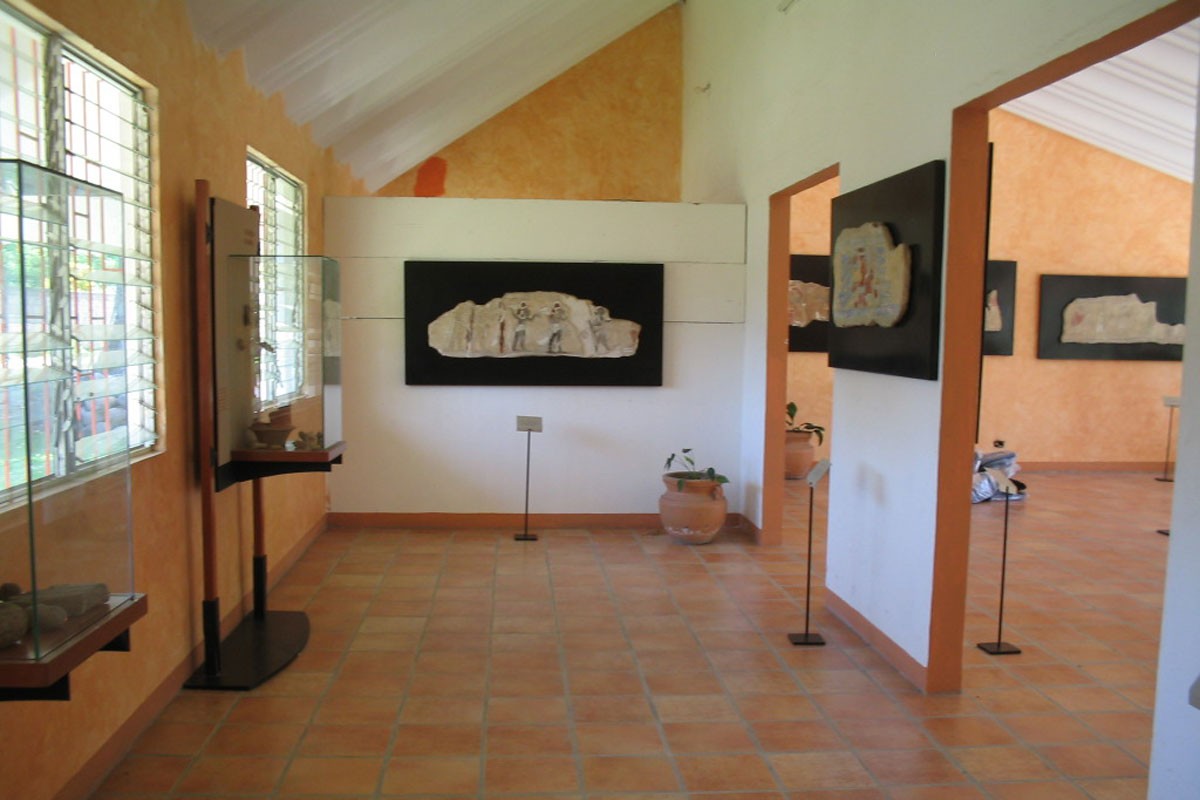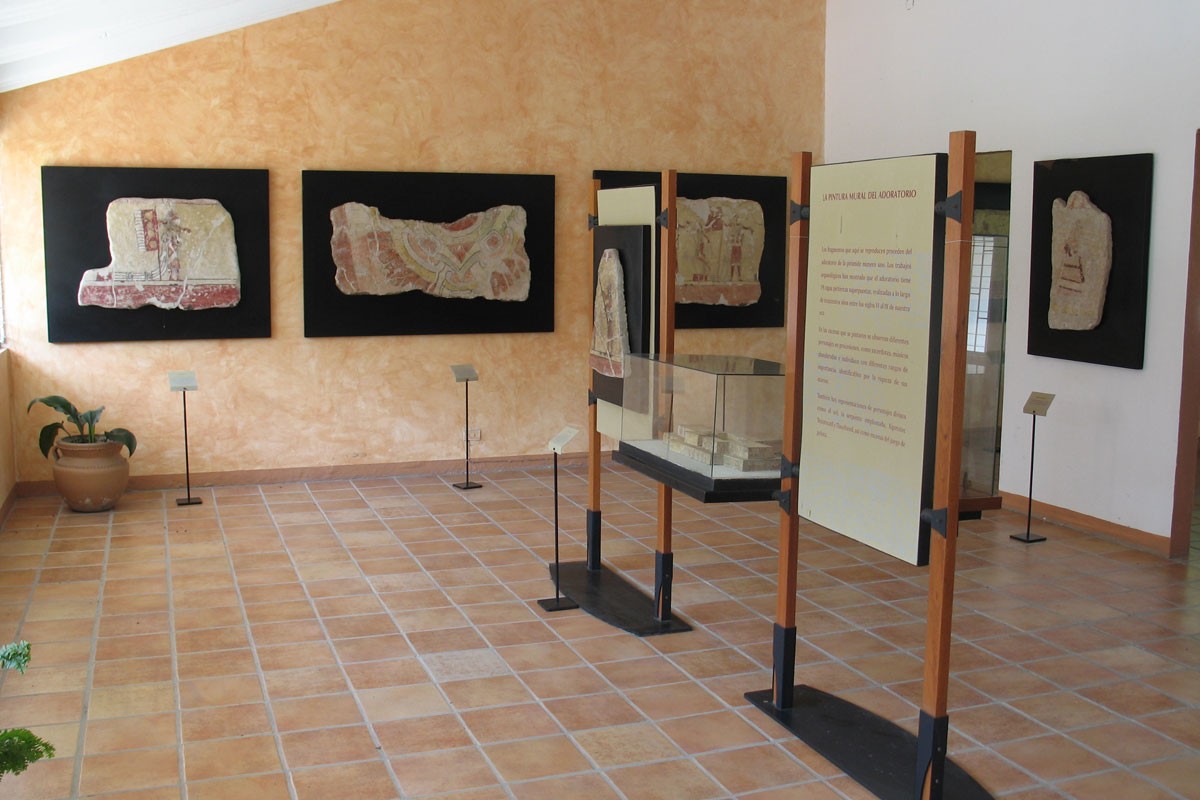Museo de Sitio de Higueras
Women played a dominant role in the ceremonies of this important Totonac city, as can be seen from its numerous murals. The mural fragments are the museum’s most valued objects, as they show varied scenes from the life of this ancient settlement.
About the museum
The museum opened in August 1986 and displays archeological material found on the site. It has one large gallery and the collection includes stone utensils such as grinding stones (metates) and the rolling pins (metlapiles) and pounding stones (tejolotes) used with them. The majority of the display space is dedicated to facsimiles of the murals found in the building situated in front of the museum.
The archeological site was discovered in 1975 when a farmer was widening a ditch on the mound, when he uncovered part of a mural. Of the site’s 28 buildings, archeologists have so far only excavated Building Number 1, which contains a set of mural paintings on the floors and walls. Layers of mural painting have been recovered from one of the first stages of construction, which the original Totonac people successively covered, replastered and repainted. Seven layers of initial painting were recovered from the first stage while 12 were recovered from the second.
A shrine was also excavated that is crowned with a ledge, while there are decorations on the inside and outside of the upper part and on some levels. The layers of painting represent various deities, priests and women. Women with pennants and an old woman are notable among the painting’s subjects.
Another series of murals shows the ball game ritual with ball players and in the center of the image there is a ball made from the rubber plant. A second picture shows the ceremonial court with a priest holding a knife and the head of a decapitated ball player, while the third has the image of the decapitated man over the ball with his face stripped to the bone and sprouting snakes like spurts of blood.
A small museum building was built in the 1980s. Xalapa Anthropology Museum was asked to provide a facsimile of some of the mural fragments, and an exhibition was set up. A few extra facsimiles were later added on top of bases, and ceramic and stone pieces from the site were added. Texts and a model of the cross-shaped temple were also included, adding to the interest of a visit.
The archeological site was discovered in 1975 when a farmer was widening a ditch on the mound, when he uncovered part of a mural. Of the site’s 28 buildings, archeologists have so far only excavated Building Number 1, which contains a set of mural paintings on the floors and walls. Layers of mural painting have been recovered from one of the first stages of construction, which the original Totonac people successively covered, replastered and repainted. Seven layers of initial painting were recovered from the first stage while 12 were recovered from the second.
A shrine was also excavated that is crowned with a ledge, while there are decorations on the inside and outside of the upper part and on some levels. The layers of painting represent various deities, priests and women. Women with pennants and an old woman are notable among the painting’s subjects.
Another series of murals shows the ball game ritual with ball players and in the center of the image there is a ball made from the rubber plant. A second picture shows the ceremonial court with a priest holding a knife and the head of a decapitated ball player, while the third has the image of the decapitated man over the ball with his face stripped to the bone and sprouting snakes like spurts of blood.
A small museum building was built in the 1980s. Xalapa Anthropology Museum was asked to provide a facsimile of some of the mural fragments, and an exhibition was set up. A few extra facsimiles were later added on top of bases, and ceramic and stone pieces from the site were added. Texts and a model of the cross-shaped temple were also included, adding to the interest of a visit.
November 1987
Practical information
Monday to Sunday from 08:00 to 17:00 hrs. Last entry 16:00 hrs.
Free admission
Carretera Las Higueras,
C.P. 93965, Vega de Alatorre,
Veracruz, México.
C.P. 93965, Vega de Alatorre,
Veracruz, México.
Take the Veracruz - Poza Rica highway and turn under the bridge (right turn) towards the city of Higueras; from Xalapa take the highway to Veracruz and connect with the Veracruz - Poza Rica highway.
Services
-
+52 (229) 939 13 30
-
This email address is being protected from spambots. You need JavaScript enabled to view it.
Directory
Encargado
Bacilio Francisco Santiago
This email address is being protected from spambots. You need JavaScript enabled to view it.
+52 (229) 939 13 30








